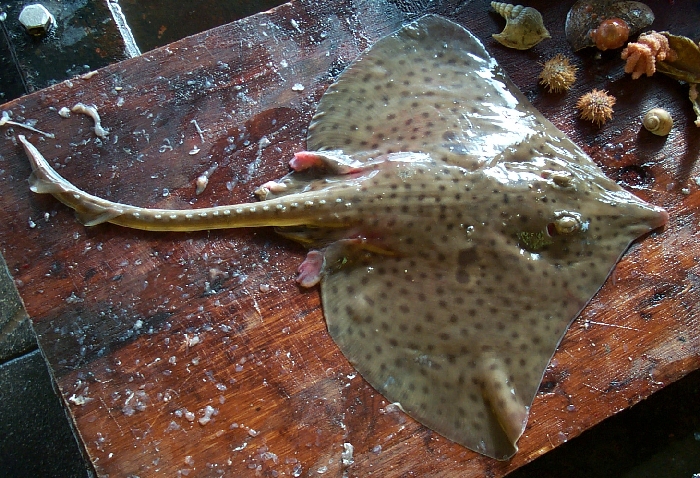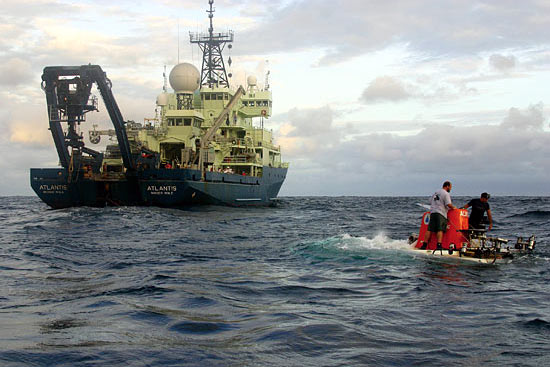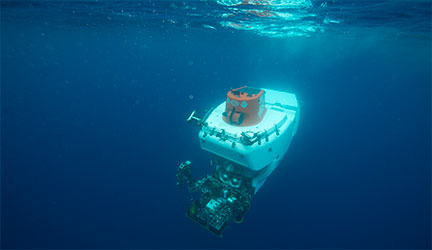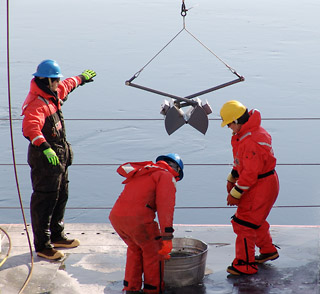Today, the 13th day of our trip, we departed from Boston, destined for Cape Cod, Massachusetts. On the docks of Aunt Lydia's Cove, we met with Ray Kane of the Cape Cod Commercial Fishermen's Association. The goal of the Association, as defined by Ray, is to make sure the fisherman of Cape Cod are catching fish and making profit. How do they do that? By promoting the interests of the local fishing community while still protecting our oceans. The Association is currently in the process of changing their name, and Ray wants the word 'sustainable' to be incorporated in the new one.
Cape Cod was originally a hook-only town. Then, in 2006, gillnetting became an acceptable method as well. Using gill nets is an incredibly efficient way to catch fish. It is, in fact, so efficient that the use of gillnets is heavily monitored and regulated by fisheries management and enforcement agencies.

Unfortunately, there are still some complications with gillnetting and the people who use this method. Although practiced by some fishermen correctly, when implemented the wrong way, gillnetting can have serious repercussions. By-catching is a problem brought on by gillnetting, and is defined as when a species that is not targeted for catch gets caught in a gill net. Gill nets can be more than two miles long, which seems to be just asking for something besides the targeted fish to be caught.
 As an intern at
the Marine Mammal Stranding Center, I can confirm that situations exactly like what is pictured here, is a common occurrence. We have seen
countless seals, sea turtles, and other aquatic species,
mangled in fisherman's nets. Fishermen have been known to leave
gill nets (or pieces of them) behind. Depending on the material they are
made from, these nets may take ages to decompose. The nets we most
commonly find animals twisted in at the Stranding Center are
monofilament, which takes over 600 years to break down.
As an intern at
the Marine Mammal Stranding Center, I can confirm that situations exactly like what is pictured here, is a common occurrence. We have seen
countless seals, sea turtles, and other aquatic species,
mangled in fisherman's nets. Fishermen have been known to leave
gill nets (or pieces of them) behind. Depending on the material they are
made from, these nets may take ages to decompose. The nets we most
commonly find animals twisted in at the Stranding Center are
monofilament, which takes over 600 years to break down.
 Ray explained that the Cape Cod Fishermen's Association uses as many precautionary tactics that they can. The mesh size, twine strength, as well as net length and depth are all closely regulated to reduce the bycatching of any non-targeted species. Unfortunately, hauling in the gill nets is an area of concern as well. When gill nets are hauled in, they can get drag across the seafloor or get caught on structures like coral or rocks. Ray explained that observers (trained biologists who collect data on fishing
Ray explained that the Cape Cod Fishermen's Association uses as many precautionary tactics that they can. The mesh size, twine strength, as well as net length and depth are all closely regulated to reduce the bycatching of any non-targeted species. Unfortunately, hauling in the gill nets is an area of concern as well. When gill nets are hauled in, they can get drag across the seafloor or get caught on structures like coral or rocks. Ray explained that observers (trained biologists who collect data on fishing
activities on board commercial vessels) actually go aboard with the fishermen to make sure they respond to situations like this correctly. It is good that all of these precautions are in place, but fishermen need to really grasp the concept of how much destruction their carelessness can cause. Gillnetting is also suspected as a factor in the depletion of fish stocks. Given that it is so efficient in catching them, this does not seem surprising. The use of GPS technology has also contributed to depletion of fisheries, because it makes finding fish so easy. If we are not careful with how we regulate this activity, it could really hurt us in the future.
The fishing fad in Cape Cod right now is skates, which we saw pounds of being brought in while we visited the docks. Ray explained them as a sustainable fish, but I can't say I fully
believe that.
Cape Cod was originally a hook-only town. Then, in 2006, gillnetting became an acceptable method as well. Using gill nets is an incredibly efficient way to catch fish. It is, in fact, so efficient that the use of gillnets is heavily monitored and regulated by fisheries management and enforcement agencies.

Unfortunately, there are still some complications with gillnetting and the people who use this method. Although practiced by some fishermen correctly, when implemented the wrong way, gillnetting can have serious repercussions. By-catching is a problem brought on by gillnetting, and is defined as when a species that is not targeted for catch gets caught in a gill net. Gill nets can be more than two miles long, which seems to be just asking for something besides the targeted fish to be caught.
 As an intern at
the Marine Mammal Stranding Center, I can confirm that situations exactly like what is pictured here, is a common occurrence. We have seen
countless seals, sea turtles, and other aquatic species,
mangled in fisherman's nets. Fishermen have been known to leave
gill nets (or pieces of them) behind. Depending on the material they are
made from, these nets may take ages to decompose. The nets we most
commonly find animals twisted in at the Stranding Center are
monofilament, which takes over 600 years to break down.
As an intern at
the Marine Mammal Stranding Center, I can confirm that situations exactly like what is pictured here, is a common occurrence. We have seen
countless seals, sea turtles, and other aquatic species,
mangled in fisherman's nets. Fishermen have been known to leave
gill nets (or pieces of them) behind. Depending on the material they are
made from, these nets may take ages to decompose. The nets we most
commonly find animals twisted in at the Stranding Center are
monofilament, which takes over 600 years to break down.  Ray explained that the Cape Cod Fishermen's Association uses as many precautionary tactics that they can. The mesh size, twine strength, as well as net length and depth are all closely regulated to reduce the bycatching of any non-targeted species. Unfortunately, hauling in the gill nets is an area of concern as well. When gill nets are hauled in, they can get drag across the seafloor or get caught on structures like coral or rocks. Ray explained that observers (trained biologists who collect data on fishing
Ray explained that the Cape Cod Fishermen's Association uses as many precautionary tactics that they can. The mesh size, twine strength, as well as net length and depth are all closely regulated to reduce the bycatching of any non-targeted species. Unfortunately, hauling in the gill nets is an area of concern as well. When gill nets are hauled in, they can get drag across the seafloor or get caught on structures like coral or rocks. Ray explained that observers (trained biologists who collect data on fishingactivities on board commercial vessels) actually go aboard with the fishermen to make sure they respond to situations like this correctly. It is good that all of these precautions are in place, but fishermen need to really grasp the concept of how much destruction their carelessness can cause. Gillnetting is also suspected as a factor in the depletion of fish stocks. Given that it is so efficient in catching them, this does not seem surprising. The use of GPS technology has also contributed to depletion of fisheries, because it makes finding fish so easy. If we are not careful with how we regulate this activity, it could really hurt us in the future.
The fishing fad in Cape Cod right now is skates, which we saw pounds of being brought in while we visited the docks. Ray explained them as a sustainable fish, but I can't say I fully
believe that.

The skate population in the North East is in abundance. Skate has become an
increasingly important fishery only because the populations of the other bottom-dwelling fish in the area (such as cod and haddock) have declined. A fishing vessel is allowed to bring in 2,600 lbs of skate a day. Sure, skates are in abundance now, but so were cod and haddock at one point. Why do you think the populations of those fish dropped so low? Because they were over fished. Skate are destined to have the same future as the other bottom-dwelling fish if fishermen continue on this path. Just because a fish is in abundance, does not necessarily make it sustainable. They need to reduce the rate at which they are extracting these fish before it is too late. According to Ray, overfishing is not the fault of fishermen, but rather the national and state fishery organizations who mismanage.
increasingly important fishery only because the populations of the other bottom-dwelling fish in the area (such as cod and haddock) have declined. A fishing vessel is allowed to bring in 2,600 lbs of skate a day. Sure, skates are in abundance now, but so were cod and haddock at one point. Why do you think the populations of those fish dropped so low? Because they were over fished. Skate are destined to have the same future as the other bottom-dwelling fish if fishermen continue on this path. Just because a fish is in abundance, does not necessarily make it sustainable. They need to reduce the rate at which they are extracting these fish before it is too late. According to Ray, overfishing is not the fault of fishermen, but rather the national and state fishery organizations who mismanage.
As we watched a fishing boat unload the pounds of skate it had caught, you couldn't help but notice the number of seals in the harbor. A few of them hovered next to the fishing boat, hoping to snag a stray skate or two. They were everywhere! Seals are currently protected under the Marine Mammal Protection Act, which I advocate daily at my internship. Under this Act, the hunting, killing, capture, and/or harassment of a marine mammal is illegal. Humpback whales are also protected under the Endangered Species Act. These causes complications for the fishermen of Cape Cod. If a seal or whale gets caught in a fishing net, the fishermen are supposed to call it in to an observer and let them handle it. Unfortunately, this just makes a lot of extra work for the fishermen, they would rather just cut it loose themselves and get back to fishing. This results in an inaccurate estimate of total marine mammal and sea turtle bycatch. Even well planned monitoring programs may underestimate marine mammal bycatch. An observer is not put onto every fishing boat that leaves the docks, so therefore every bycatch is not recorded. The data that has been collected on bycatching shows that, in the United States, most observed bycatch occurs in gill-net fisheries. To a fishermen like Ray Kane, these seals and other marine mammals have recovered, so therefore they don't need our protection.
Menhaden is known as the most important fish in the sea. Why? Tiny, oily menhaden provide food for essential fish such as striped bass and for birds such as osprey, bald eagles and brown pelicans. Without menhaden, it is said that the ecosystems of the Atlantic Ocean, and other coastal water ways, would come crashing down.

As you can see in the chart above, menhaden have been on a steep decline. This is due, with no surprise, to over fishing. The Atlantic States Marine Fisheries Commission voted 14 to 3 to cut the amount of menhaden that can be harvested annually from 183,000 metric tons to 174,000 metric tons. The commission must now draft and vote on a plan to implement the new rule, which is likely to become effective in May 2013. Ray Kane is pleased with the changes concerning menhaden, and believes that they should be preserved. Especially since most of the over fishing is done by one, single company. In 2010, Omega Protein Corp. took 160,000 metric tons of menhaden — 80 percent of the 450 million fish harvested last year.
The company crushes the fish into meal to feed livestock and farmed fish around the world. Omega felt that the Commission's decision was harsh, and that water quality and other environmental factors were just as liable for the fish decline. Agricultural run off is a leading contributor to water quality degradation. So, ironically, those livestock Omega are feeding these menhaden to, is probably contributing to that terrible water quality.
The quality of the environment is what is going to decide how successful these fishermen are. Oceans are an amazingly intertwined system, so keeping all of them in pristine condition is crucial. Ray explained how even the fishermen of Cape Cod were feeling the effects of the Gulf oil spill.

The diagram above shows how the currents of our water ways work together. The Gulf stream moves right up towards North Eastern America, which is why Cape Cod fishermen are seeing changes. Ray claims that the Federal government knows that the water is dangerous, but they don't want to destroy an entire industry of fishing. Debris and radiation from the earthquake in Japan are also showing up in United States waters. Fish who travel from the waters of Japan to the coasts of California have shown an increase in their radioactive levels. The contamination level is still well below what is considered unsafe for humans, but how long until that changes? These fish were eating contaminated krill and squid, and now we're eating those fish. An unhealthy ocean results in unhealthy humans.
"Fishermen are the conservationists of the ocean," Ray Kane told us. After meeting with him, I realized that maybe fishermen weren't these money hungry people who would deplete every fishery if it fed their income. However, after researching the topics we discussed a bit further for this blog, my opinion of fishermen changed again. To fishermen, the definition of words like sustainable and conservation are different than those of environmentalists. Ray said that skates are a sustainable fish. After doing the research, I don't see skates as being sustainable at all. Skates are what fishermen have resorted to because they already gobbled up all the cod and haddock they could. Omega, the company extracting the majority of menhaden, is doing what most commercial fishermen probably wish they could do and that is why they are pushing so hard for a lowered harvest amount. The Endangered Species Act has done its job and recovered the humpback whale population, so Ray says they should be taken off the Endangered Species List. What were the causes of their endangered statuses in the first place? Being hit by ships, caught in fishing nets, and killed for "scientific research." If removed from the list, whales will no longer be protected from these activities. I truly believe fishermen could be the conservationists of the sea, but not until their greed is out of the way.
We left the docks of Aunt Lydia's Cove, and headed to the Woods Hole Oceanographic Institute. We met with a retiree of the Institute, Harvey, who gave us a tour.
The main focus of the Woods Hole Oceanographic Institute (WHOI) is discovering this ocean. The ocean is one of the planet’s last unexplored frontiers and WHOI scientists and engineers are committed to understanding all facets of the ocean as well as its complex connections with Earth’s atmosphere, land, ice, seafloor, and life. The Institute was established in 1930, when concern had grown about their not being an East Coast institution that allowed for deep ocean research. 3 million dollars was given to the Institute from scientists, interested guests (such as the Rockefeller family) and the United States Navy. Two areas of research were requested from the Navy; 1) how to keep their ships faster than other naval fleets and 2) how to remain undetected in the water. The annual budget of the Institute is about 2 million dollars.
WHOI has two large research vessels in their possession. The research vessel Knorr is owned by the U.S. Navy and operated by WHOI for the ocean research community. Knorr is best known as the ship that supported a team of WHOI and French researchers in 1985 as they discovered the wreck of the RMS Titanic. The ship can carry a crew of 22 and a scientific party of 32 to sea for as long as 60 days.

The Research Vessel Knorr. (Woods Hole Oceanographic Institution)
The other large research vessel WHOI has is the Atlantis. The Atlantis is owned by the U.S. Navy and
operated by WHOI for the oceanographic community. It is one of the most
sophisticated research vessels afloat, and it is specifically outfitted
for launching and servicing the Alvin human occupied submersible. The ship carries a complement of 36 crew members, science technicians, deep submergence group members,
as well as a scientific party of 24 men and women for as long as 60
days. There are six
science labs and storage spaces, precision navigation systems, seafloor
mapping sonar, and satellite communications.

The research vessel Atlantis, with Alvin sub preparing for a dive. (Woods Hole Oceanographic Institute)

The Alvin during a dive.
Atlantis' three winches, three cranes, machine shop, and specialized hangars were specifically designed to support Alvin. Alvin is capable of taking 3 people to incredibly low depths of the ocean. The decent of this submersible takes around hours, as well as its ascent to the surface. This submersible explored the first known hydrothermal vent sites in the 1970s. A new Alvin is currently being created for the WHOI, and will be capable of diving 6500 meters into the ocean. This vessel will open up 98% of the oceans floor, most of which human eyes have never laid eyes on before. Atlantis is owned by the Navy and must report back to them every 3 years for inspection.
Atlantis' three winches, three cranes, machine shop, and specialized hangars were specifically designed to support Alvin. Alvin is capable of taking 3 people to incredibly low depths of the ocean. The decent of this submersible takes around hours, as well as its ascent to the surface. This submersible explored the first known hydrothermal vent sites in the 1970s. A new Alvin is currently being created for the WHOI, and will be capable of diving 6500 meters into the ocean. This vessel will open up 98% of the oceans floor, most of which human eyes have never laid eyes on before. Atlantis is owned by the Navy and must report back to them every 3 years for inspection.
Harvey displayed some of the tools researchers at the WHOI commonly use. One of them being a van veen grab. This is a bottom sampler and only grabs 1/50 of a square meter of the ocean floor. This is considered a small tool by researchers. An example of a van veen grab is pictured below.

Researchers using a box corer.
Another tool WHOI researchers use is a box corer. This is one of the simplest and most commonly used tools at the WHOI. It has a sampling volume of large as 50cm X 50cm X 75cm, which is greater then the van veen grab. The box corer causes minimal disturbance to sediments and is capable of sampling the water overlying the sediments as well. The diagram below illustrates the basic operation of a box corer.

What made this Institute so amazing was the fact that most of the vessels and tools they use can be built or repaired there as well as launched. If a water sampling device needs to be dropped to a certain height at a certain speed, the technicians at the WHOI are the ones to create it. On the tour we actually went inside their engineering facilities and saw these types of things beings made. The Woods Hole Oceanographic Institute provides the world with incredible information about our oceans and how it connects with other aspects of the environment. Without this Institute, we would not have the knowledge we do about our mysterious, unexplored oceans. Surely they will be providing us with ground breaking information for years to come.
Citations used in this post:
http://www.washingtonpost.com/national/health-science/menhaden-harvest-limit-sharply-cut-by-fisheries-commission/2011/11/09/gIQA7Twg6M_story.html
http://www.nmfs.noaa.gov/by_catch/National_Bycatch_Report/2011/ExecutiveSummary.pdf
http://nero.noaa.gov/prot_res/atgtrp/ai/gr/10.pdf
http://nero.noaa.gov/prot_res/atgtrp/ai/gr/10.pdf
http://nero.noaa.gov/prot_res/atgtrp/ai/gr/10.pdf
http://www.fws.gov/endangered/species/index.html
http://www.fws.gov/endangered/species/index.html
No comments:
Post a Comment